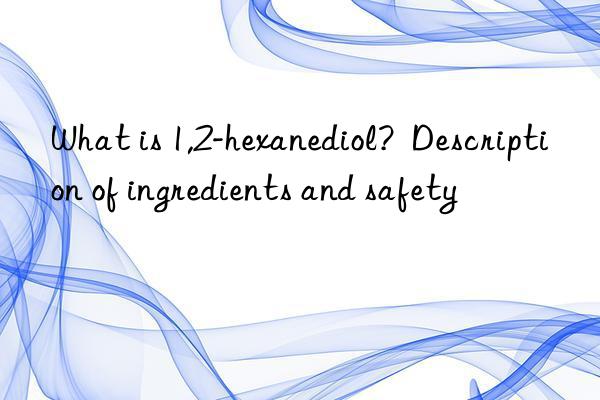
[Cosmetic ingredient name] 1,2-hexanediol
It is a glycol (*1) with refreshing feeling and excellent antibacterial properties. It is also an alkanediol, a A polyol with high antibacterial properties. *1 Polyols have extremely high hygroscopicity and water retention properties, and therefore are the most commonly used moisturizers in cosmetics. The name "alcohol" is misleading, but ordinary alcohol (ethanol) is a monohydric alcohol, and polyols and monohydric alcohols (ethanol) are different substances.
The antibacterial properties of polyols are shown in the table below
Glycerin and sorbitol have no preservative effect, but glycols such as propylene glycol have antibacterial activity against Gram-negative bacteria. (Ref. 3: 2006) The antimicrobial properties of these glycols are caused by the action of the glycol dissolving itself, and this moisture carries it away from the microorganisms, which are thought to be unable to grow or die. (Document 3: 2006) (* 2) ∗ 2 In order for microorganisms to grow, a minimum amount of water is required, and adding glycol will reduce the water activity of microorganisms and inhibit the growth of microorganisms. When adding cosmetics,
·Moisturizing effect by softening the skin surface and increasing moisture content
·Product stable antibacterial preservative
For this purpose, it can be used in various products such as skin care cosmetics, color cosmetics, body and hand care products, facial cleansers and soaps, cleaning products, sheet mask products. (Reference 2: 2005; Reference 3: 2006; Reference) 5: 2012)
Antibacterial and antiseptic product stabilizer
According to the MIC (minimum inhibitory concentration) of stabilizers for antibacterial and antiseptic products released by Mandom in 2005, in order to compare the chain For the antibacterial properties of alkanediol and other polyols against E. coli, we measured the MIC (minimum inhibitory concentration) (*3) *3 Since MIC is the minimum inhibitory concentration, the smaller the value, the higher the antibacterial activity.
Compared with other polyols, alkanediols It has been shown to significantly inhibit the growth of E. coli and1,2-hexanediol is believed to have excellent antibacterial properties against E. coli.
According to the MIC (minimum inhibitory concentration) of 1,2-hexanediol announced by the high-grade alcohol industry in 2006, in order to study the antibacterial activity of 1,2-hexanediol against the following four species, such asMIC shown in the table below. (*3) *3 Since MIC is the minimum inhibitory concentration, the smaller the value, the higher the antibacterial activity.
1, 2-Hexanediol showed excellent antimicrobial activity against all four species. In addition, based on the verification of the minimum inhibitory concentration published by Mikimoto Pharmaceutical in 2012, eight antibacterial ingredients commonly used in cosmetics (methylparaben, phenoxyethanol, BG, amylose Glycol, ethanol, DPG, 1,2-hexanediol, octanediol) An experiment was conducted using the following 5 substances recommended in the Japanese Pharmacopoeia preservative efficacy test. · Staphylococcus aureus (Sa) · Pseudomonas aeruginosa (Pa) · Escherichia coli (Ec) · Candida albicans (Ca) · Aspergillus niger (Aspergillus brasiliensis: Ab) Place 20g sample into a sterile container and inoculate 0.2 mL of microbial suspension mixed at 10⁷-10⁸/mL, take out a portion every other week, and measure the number of surviving bacteria according to the MIC as shown in the table below (*4), *4 Sa, Pa, Ec in the table, Ca and Ab are the abbreviations of English bacteria. Since MIC is the minimum inhibitory concentration, the smaller the amount, the higher the antibacterial activity.
Compared with other polyols,1,2-hexanediol has All five species of bacteria have excellent antibacterial properties.�. Methyl parahydroxybenzoate is often bound by some polymer compounds such as methylcellulose, gelatin proteins, etc., causing it to lose its antiseptic activity, while pentylene glycol can maintain its antibacterial properties and enhance its antibacterial properties. Additionally, the combination of 1,2-hexanediol and pentanediol or octanediol has been reported to show synergistic antimicrobial properties (Ref. 5: 2006).
Author: Yiko
Link: https://www.jianshu.com/p/0c81671265e9
Source: Jianshu
/>Copyright belongs to the author. For commercial reprinting, please contact the author for authorization. For non-commercial reprinting, please indicate the source.

 微信扫一扫打赏
微信扫一扫打赏

